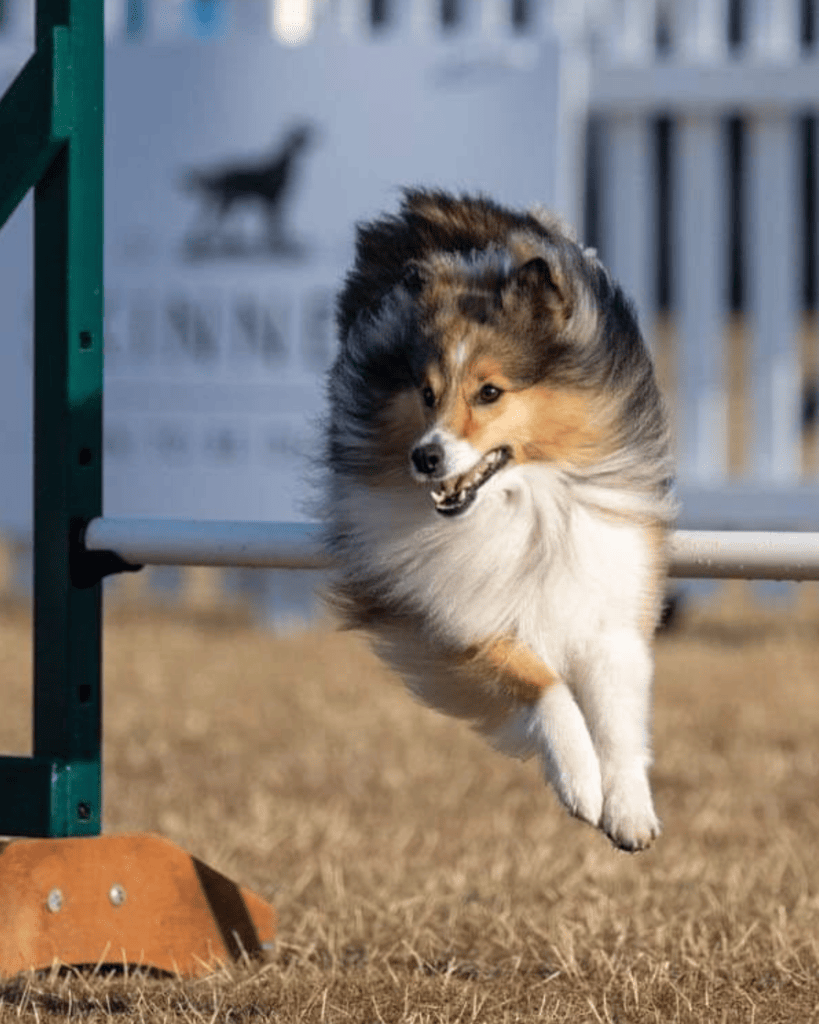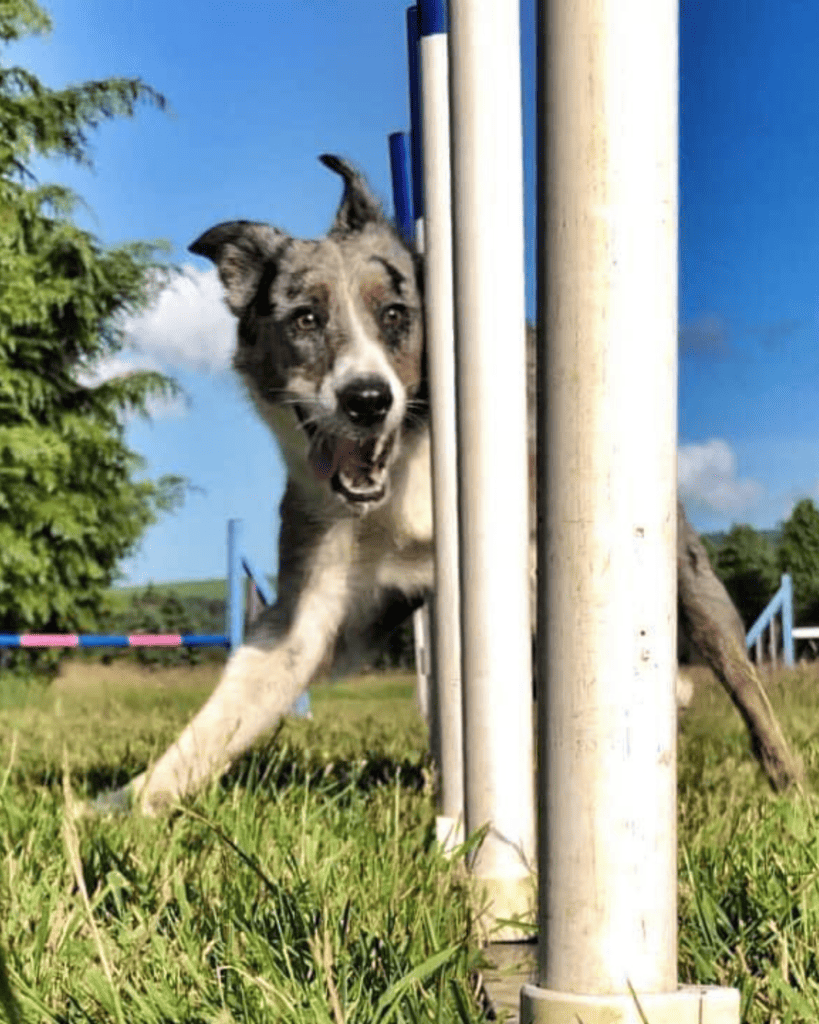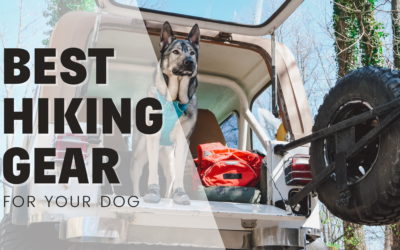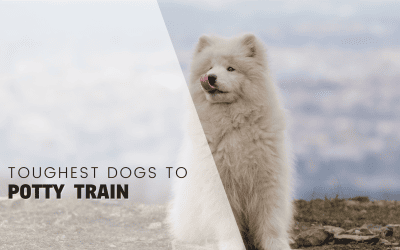For dog lovers, there’s often much more to celebrate than mere looks or breeds. Among the many characteristics that make our four-legged friends truly fascinating, agility often tops the charts. Elite canine athleticism showcases a blend of speed, nimble precision, and problem-solving prowess. Agile dogs are a thrill to watch, especially when they’re gracefully spelled out across a field, tackling sharp turns, jumps, tunnels, and weave poles with ease.
If you have a penchant for agility-oriented fun with your companion, or are planning to get a pet and want one that could potentially excel in agility challenges, this article is crafted for you. We unravel the top 10 most agile dog breeds — a curated list that will guide you in discovering the breeds famed for their dexterity, quick reflexes, and agility. From the super smart Border Collie to the high-spirited Jack Russell Terrier, find out who earns a spot in our agility hall of fame.
So, get ready for a sprint; a journey that zooms into the world of dogs where agility is the signature trait. Whether you’re an aspiring dog-agility handler or just someone who appreciates canine athleticism, prepare to meet the fastest, most nimble and, undeniably, the most agile dog breeds known to man. Strap in as we dive nose-first into this exciting world.

What Are Ideal Features For An Agility Dog?
Desirable features for an agility dog can be grouped into physical, intellectual, and social categories. The ideal agility dog should possess most or all of the following qualities:
Physical attributes:
- Athleticism: Agility exercises require a dog to demonstrate physical fitness, including a well-muscled build, flexibility, and endurance.
- Agility and speed: A dog must be capable of maneuvering through obstacles and tight spaces, changing directions swiftly, and picking up speed when needed.
- Balance and coordination: Essential for navigating intricate courses, maintaining stability on elevated surfaces, and handling complex agility equipment.
- Jumping ability: Necessary for clearing hurdles, weaving through poles, and executing other exercises that require leaping or bounding.
Intellectual attributes:
- Intelligence: An agility dog should be quick to learn and understand tasks and handlers’ commands to adapt to new challenges.
- Trainability: Effective response to training, including positive reinforcement and consistency, makes a dog more successful at agility exercises.
- Focus and attentiveness: A dog must pay close attention to its handler’s directions and maintain concentration during exercise sequences.

Social and emotional attributes:
- Strong work ethic and motivation: A dog that is eager to work, learn, and face challenges is typically more successful at mastering agility tasks.
- Bonding and trust with the handler: A strong relationship between handler and dog is crucial for effective communication and teamwork in agility.
- Adaptability: The ability to adjust to new environments, tasks, and training approaches makes a dog more versatile in the ever-evolving sport of agility.
- Confidence and temperament: A well-adjusted dog with a stable temperament can cope better with the pressures and stress of competitive agility events.
An agility dog needs to be a lot of things! They are canine athletes after all!
Top 10 Most Agile Dog Breeds
Do remember that whilst these are some of the most successful dog breeds in the agility field, it doesn’t mean that all dogs of these breeds will be equally active dogs or enjoy agility! These are all athletic breeds, but if you’re really looking for an agility specialist? Make sure to investigate your breeder to maximise the success of your chosen breed of dog in the agility arena.
1 – Border Collie
Border Collies are renowned for their agile prowess, and this reputation stems from several key traits that contributed to them being the best choice for agility dogs. Firstly, they are herding dogs, born and bred for the task of managing flocks of sheep. This background necessitated the development of keen intelligence, speed, and dexterity. Advanced problem-solving abilities and adaptability make them incredibly responsive to training, a critical factor for agility.
Physically, Border Collies have an athletic, medium-sized frame that supports their sturdiness and swiftness. Their agile bodies, combined with their robust stamina, allow them to execute fast and sharp movements efficiently.
Finally, Border Collies are notable for their intense energy levels and mental acuity. With a natural instinct to work and a strong eagerness to please their owners, they often excel in tasks which require endurance, athleticism and fast learning – characteristics fundamental to agility.

2 – Australian Shepherd
The Australian Shepherd is recognized as one of the most agile dog breeds for several reasons. One of the primary reasons is their high energy levels. Australian Shepherds are known for their abundant energy, which makes them physically capable of agile movements and strenuous exercise. Their origins as working dogs contribute to their naturally high energy levels, making them perfect for agility activities.
Another notable reason is their intelligence. Australian Shepherds are renowned for being one of the most intelligent dog breeds and are capable of learning a myriad of tricks, commands, and games. This mental agility complements their physical agility by allowing them to understand and perform complex routines and obstacles with ease.
It’s important to note that the precise ranking of dog breed agility can vary based on the criteria used, such as the specific agility tasks tested and the population of dogs assessed. Nevertheless, the Australian Shepherd is consistently recognized as a highly agile breed due to their remarkable combination of intelligence, energy, and their natural disposition for physical activities meaning you’ll be giving them a fantastic outlet for their needs with this choice of athletic lifestyle.
3 – Jack Russell Terrier
Jack Russells, originally bred for hunting, are known for their speed, small size, energy, and fearless nature. They are often described as having an almost limitless reserve of energy, which enables them to take on tasks requiring prolonged physical activity. This makes them outstanding athletes in dog sports, not just agile participants.
These dogs’ inherent traits are ideal for specific agility activities often found in dog sporting events. The breed excels in go-to-ground trials which involve courses that test their speed, agility, and tenacity. The relatively smaller size and lightweight frame of Jack Russell Terriers provide an advantage, making them adept at sharp maneuvers and quick movements.
The Jack Russell Terrier is often celebrated for its intelligence, a crucial factor in agility exercises. They demonstrate quick thinking and adaptability, crucial elements during agility courses. When participating in agility training sessions and events, these small dogs exhibit incredible enthusiasm and zest. These are crucial characteristics for agility exercises that require not just physical fitness but dynamic energy, excitement, and a positive mindset.
Despite their inherent energy and agility, it’s essential to note that the performance of Jack Russell Terriers can vary significantly. Factors such as the dog’s individual health, temperament, and the quality of training provided can greatly impact their agility.
4 – Shetland Sheepdog
the Shetland Sheepdog, also known as ‘Sheltie,’ is an excellent choice when considering an agility dog.
Developed in the rugged Shetland Islands, off the coast of Scotland, near the cold climates of the Arctic Circle, Shetland Sheepdogs are synonymous with agility, alertness, and energetic nature. They have inherent traits that make them incredibly agile. Highly energetic, they love to play and excel in engaging activities, including fetch.
Intelligence is another primary reason. Shelties are considered among the most intelligent dog breeds globally. Their intelligence allows them to quickly grasp and learn new commands, which translates to superb agility performance.
Shetland Sheepdogs also display natural athleticism, working ability, and a strong inclination to please their owners. These qualities combined have led to this breed routinely comprising a substantial percentage of the top dogs in annual agility rankings.
Also, they are recognized as being light-footed runners and are known for their athletic build and graceful personality, characteristics that are beneficial in agility games that require nimble jumps and quick turns. Meanwhile, mental stimulation activities like agility training help Shelties maintain their happiness and well-behaved nature.
However, one needs to take care of some potential health concerns, like Hip Dysplasia, while considering them for agility or any strenuous physical activities. Appropriate examinations and preventative care can help manage these concerns and ensure the dog’s agility performance.

5 – Papillon
The Papillon breed is known for its agility, both physically and mentally. They are little dogs with a lively demeanor and seemingly boundless energy, making them perfect candidates for agility tasks. Thanks to their compact size and light body structure, Papillons are swift, adept at making quick turns and jumps, and can easily navigate through agility courses that larger dogs might find challenging.
Secondly, Papillons are incredibly intelligent. They have the ability to pick up new tasks quickly, with agility training being no exception. Because of their intelligence, they can be trained to perform complex tasks and routines reliably in agility competitions. Additionally, their intelligence allows them to adapt to new situations and react quickly to their handlers’ signals during agility trials.
Another characteristic that favors the Papillons’ agility is their curiosity and zest for life, which translates to enthusiasm towards agility courses. Many Papillons enjoy the challenge and novelty of agility tasks and will take to training with eagerness.
It’s also important to note that Papillons have a deep desire to please. This means they are eager to work collaboratively with their handlers and can create strong partnerships in competitive environments like agility competitions. The combination of their physical agility, intelligence, enthusiasm, and eagerness to please makes Papillons an excellent choice for agility dogs.
6 – Belgian Malinois
The Belgian Malinois, known for its athletic physique, makes a top-tier choice for agility activities with its physical strength, swift pace, and endurance. These characteristics enable the breed to excel in various dog sports, including agility tasks, such as running, jumping, weaving, and scaling with relative ease – the physical challenges of agility are nothing for your malinois. There’s a reason these are on pretty much every list of the most athletic dog breeds.
Another distinctive attribute of the Belgian Malinois is its high energy level. They are known to approach agility tasks with unfettered enthusiasm, thanks to their limitless and infectious energy. Moreover, their capability of performing intensive and prolonged physical activities reflects on their performance in agility tasks.
Intelligence, complemented by an exceptional capacity for trainability, defines the Belgian Malinois. As a breed that is acclaimed for its intelligence, the Belgian Malinois can quickly learn and remember sequences of agility tasks. Their focus and understanding of complex commands make them a perfect match for agility training and competitions.
Belgian Malinois has a strong work ethic, inherited from their herding ancestors. They relish having a task or job to do and enjoy the stimulating challenges that agility courses pose. Their desire to please their human companions, along with forming strong bonds, contribute significantly to their agility training responsiveness. Their adaptability, another valuable trait, allows them to adjust effortlessly to new environments, tasks, and commands crucial in the dynamic sport of dog agility – and will help your malinois become great family pets as you meet their needs with this active lifestyle.
Note: I would only recommend a malinois for serious dog parents who want to give a lot of time to their dog. They’re a great choice for the sport, but they can struggle in a home environment if not provided with appropriate stimulation and training to set them up for success.
7 – Poodle
The Poodle, whether it’s the Miniature, Toy, or Standard poodle variant, is well-regarded as a talented agility dog for a number of reasons.
Firstly, Poodles possess physical attributes that contribute to great agility capacity. They are renowned for their exceptional athleticism and high energy levels. Built lean and muscular, they are capable of swift movements, quick direction changes, and high jumps, all essential elements for proficient performance in agility courses.
Secondly, Poodles have incredible intelligence. This trait is reflected in their high trainability, as they can quickly grasp and remember complex sequences of tasks, which is paramount for agility trials. This ability to learn swiftly, paired with a keenness to pay close attention to their handler’s commands and signals, make them highly adaptable and successful in the arena of dog agility.
Furthermore, Poodles inherently have a strong drive to work and a natural desire to please their owners. This inclination often results in a dog that is motivated to do well in agility training, as they thrive on achieving tasks and receiving positive reinforcement.
Lastly, their expressive and perceptive nature makes them great communicators. In agility exercises, effective communication between the handler and dog is critical, and Poodles have been known to understand and interpret their handlers’ commands very accurately.
8 – English Springer Spaniels
Springer Spaniels indeed make outstanding agility dogs, and this suitability is apparent in their unique traits and abilities. Originally bred as working dogs, these energetic canines boast robust athletic prowess, essential for navigating demanding agility courses. They have a naturally robust and flexible physique, allowing them to speed through courses, leap over hurdles, and deftly handle sharp turns with ease.
Springer Spaniels are celebrated for their high intelligence and exceptional trainability. Their mental agility matches their physical agility, making them proficient at understanding and learning the complexities of agility courses. They are fast learners, rapidly picking up new commands and tricks, which is undoubtedly advantageous when mastering the various challenges agility has to offer. Their focus and attentiveness make them ideal at following a handler’s cues swiftly and effectively—a pivotal attribute in agility.
Another remarkable characteristic of Springer Spaniels that makes them excellent agility dogs is their immense enthusiasm for work. They tackle tasks with eagerness, charm, and an inexhaustible supply of energy. This high spirit and enthusiastic work ethic make agility training exceptionally enjoyable and rewarding for this breed.
Then, Springer Spaniels forge deep bonds with their handlers! Making them not only listen well but also adapt to their handling style and pace. This heightened sensitivity to their handlers’ guidance, combined with an innate desire to please, makes them truly shine in agility disciplines where rapport between dog and handler is key.
9 – Cocker Spaniel
Cocker Spaniels declare themselves as candidates for first-rate agility dogs through their distinctive qualities, firmly rooted in their breed characteristics and history. Known for their compact, sturdy bodies and boundless energy, their physical make-up naturally complements the athletic demands of agility courses. Their agility and quickness equip them with the capacity to nimbly maneuver through a variety of obstacles present in the agility courses, whether it’s darting through tunnels or swiftly circumnavigating poles.
Renowned for their intelligence, Cocker Spaniels possess an unquestionable ability to quickly absorb training, demonstrating a knack for learning new tricks and commands. This breed proves its intellectual capacity when it comes to mastering the complex pathways and challenges an agility track presents, displaying an innate understanding of tasks at hand which, coupled with a well-honed focus, allows them to predict and prep for the hurdles ahead.
On top of their physical and intellectual aptitudes, Cocker Spaniels exhibit a high level of motivation, a trait essential for agility dogs. Driven by their innate desire to please their human companions, these dogs thrive off of positive reinforcement, striving to excel in their agility performance in their desire to make their guardians proud. This aspect of their temperament fosters an enriched bonding experience between the handler and the dog, which is specifically crucial in agility disciplines where seamless communication and an acute understanding of each other’s signals and behaviors contribute to success.
10 – Labrador Retriever
Labs are quick learners and historically one of the most popular dog breeds. Initially bred for physically demanding jobs like retrieving game, Labradors possess innate athletic abilities. Their muscular build, endurance, and nimble grace allow them to skillfully navigate the physically challenging aspects of agility courses and are a high-energy dog that you know will ace the course. Their inherent swimming capabilities hint at their flexibility and navigational skills which can be beneficial in negotiating the diverse array of agility equipment.
Renowned for their intelligence, Labradors are quick to grasp new commands and tricks. This mental agility proves particularly advantageous in comprehending the complex sequences found in agility courses. Their keen ability to focus and their responsive nature make following a handler’s signals during agility training an effortless task for them.
What sets Labradors apart is their unmatched enthusiasm and love for activity. They thrive on engagement and exercise, bringing an infectious zest to training sessions that can make agility training an exhilarating experience for both the dog and the handler. This breed’s high energy levels and robust constitution make them well-equipped for the intensive physical activity demanded by agility courses.
Not to forget, they’re also hugely sociable dogs and desire to please their handlers create an effective working partnership essential to agility. Labradors form intense bonds with their guardians, are highly cooperative, and respond well to positive reinforcement, which are all key elements for a successful partnership in agility.

Breeds You May Have Expected To See
You may have expected to see other really athletic dogs, like siberian huskies, german shorthaired pointer, or a german shepherd, or an Australian cattle dog – a lot of these don’t make the list simply because they are a smidge more towards the upper end of their agility size category, and whilst they are agile breeds – they can’t quite keep the pace that the more petite dogs can.
It’s tough, for sure! But remember, these are the best “competition” dogs! Any dog can do agility and it’s a wonderful thing for you and your pup to explore together – even if you’re not going to come home with a first place ribbon.
How To Get Started With Agility
For a dog guardian looking to get started with agility, the following steps can help implement a smooth and enjoyable transition into the sport:
1. Assess your dog’s readiness:
First, make sure your dog is healthy and physically able to participate in agility. Consult your veterinarian to discuss whether your dog is physically suited for the sport, considering factors like age, fitness level, and breed disposition.
2. Socialize your dog:
Agility exercises often take place in social settings with other dogs and people. Help your dog develop social skills by exposing it to different environments, animals, and people.
3. Basic obedience training:
Start with basic obedience commands such as sit, stay, down, come, and heel. These commands will help you establish the necessary foundation for agility training.
4. Research agility clubs, classes, or trainers:
Look for local agility clubs or classes, ideally with experienced and certified trainers. They can provide guidance, support, and access to safe and proper agility equipment.
5. Attend beginner agility classes or private lessons:
Enroll in a beginner-level agility class or, alternatively, schedule private lessons with a skilled trainer. Both settings can provide you with invaluable information and progressively develop your dog’s agility capabilities.
6. Home practice:
Outside of regular classes or training sessions, practice with your dog at home. Start with simple exercises such as low jumps or tunnels, using relevant equipment. Gradually incorporate more advanced and varied elements from the agility curriculum.
7. Socialize with the agility community:
Participate in workshops, seminars, or informal “fun matches” to network with fellow agility enthusiasts, learn from experienced handlers, and boost your dog’s confidence in agility environments.
8. Enter agility competitions:
When you and your dog are ready, consider participating in agility trials. These offer opportunities to gauge your progress, hone your skills, and gain valuable experience under competitive conditions.
9. Continue learning and training:
Agility is an ongoing learning process. Stay dedicated to your dog’s training, regularly attend classes, and remain open to new techniques or approaches that can further boost your performance.
Agile Dogs Are Smart Dogs…
Journeying into the world of canine agility represents a rewarding endeavor for both the dog and its guardian, fostering a deeper bond, enhancing physical fitness, and stimulating the dog’s mental faculties. The progression from assessing your dog’s readiness, through basic obedience training, to attending agility classes, all the way to participating in competitions, is a guided yet flexible process. Patience, consistent practice, and dedication to continued learning form the bedrock of this adventure.
With appropriate considerations accounted for, be it the dog’s health, your lifestyle, or financial commitment, you stand to unlock a fulfilling pastime that is bound to bring joy, challenges, and a significant sense of achievement for you and your agility dog. Indeed, exploring the realm of agility offers a perfect opportunity to enrich your companionship with your canine friend in a fun, engaging, and healthy way.

Author, Ali Smith
Ali Smith is a professional, qualified, and multi-award winning trainer is the founder of rebarkable. She has always believed animals deserve kindness and champions force free methods. Believing that dog guardians will all choose the kindest options if proper information is provided, she aims to help all dog guardians who need it and make dog training as accessible as possible
Ali lives win Maryland, US with her husband and her three dogs.
With Thanks To
Niki Pressburger of Paws Are Made For Walking for sharing her stunning shots of JJ the merle Border Collie






0 Comments